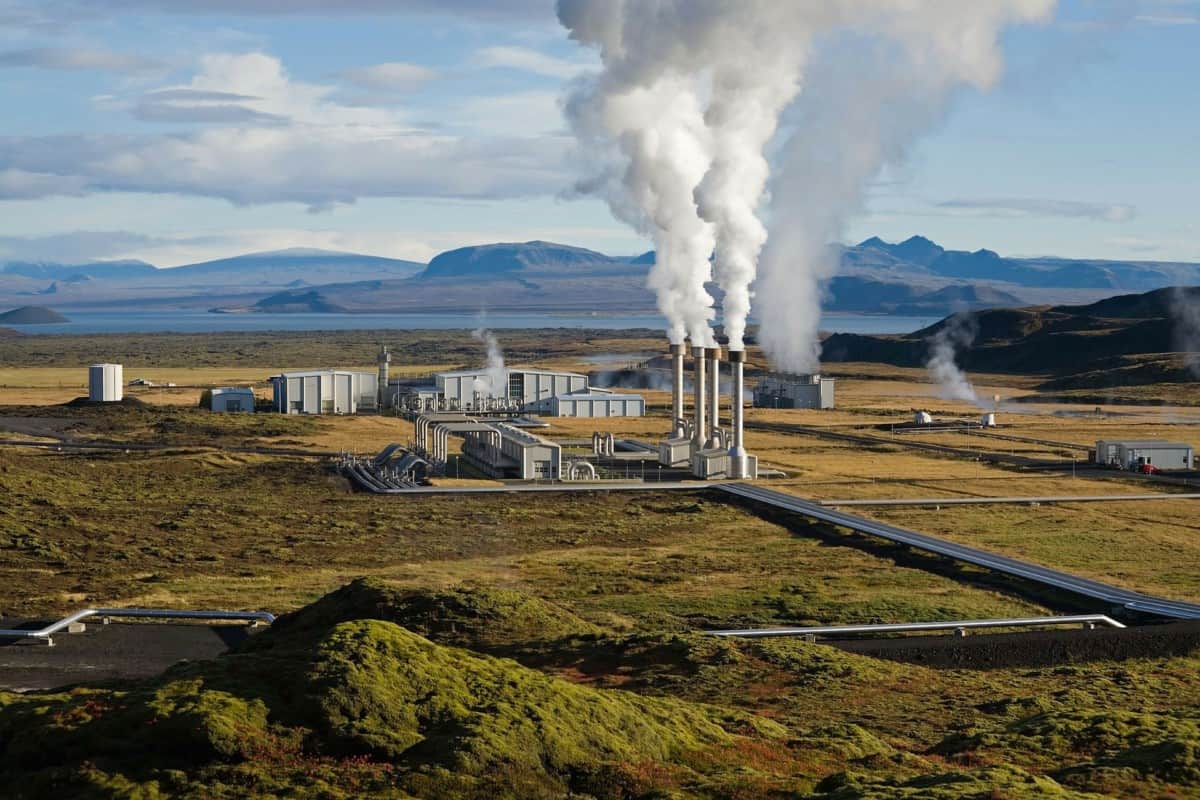What is Geothermal Power
In an era where the quest for sustainable energy sources is more crucial than ever, the question arises: What is geothermal power. And is it truly a renewable resource? Therefore, as we delve into this topic, it’s important to understand that geothermal energy isn’t just an alternative energy option; it represents a significant leap toward addressing global warming and achieving energy independence.
What Is Geothermal Power?
Firstly, Geothermal power is energy derived from the heat stored beneath the Earth’s surface. Thus, this heat energy, a result of the radioactive decay of minerals and the original heat from the Earth’s formation, provides an abundant source of power that can be tapped for heating, cooling, and electricity generation. Unlike fossil fuels, geothermal energy is clean, sustainable, and available 24/7, irrespective of weather conditions.
Understanding the Basics of Geothermal Energy
To appreciate the potential of geothermal power, it’s essential to grasp how it works. The Earth’s crust, though seemingly solid and unchanging, is a dynamic source of heat energy. Beneath the surface lie underground reservoirs of hot water and steam, which can be accessed through drilling. This geothermal fluid is then used to drive turbines connected to electrical generators in geothermal plants, thus producing electricity.
Is Geothermal Power Renewable?
Yes, geothermal power is a renewable energy source. It harnesses the Earth’s internal heat, which is constantly replenished by natural processes. Making it a reliable and sustainable form of energy. The U.S. Department of Energy highlights geothermal energy’s role in reducing greenhouse gas emissions. Underscoring its environmental benefits and its contribution to combating climate change.
The Versatility of Geothermal Systems
Geothermal Heat Pumps and Direct Use
One of the most common applications of geothermal energy is in heating and cooling through geothermal heat pumps. These systems use the stable temperature of the Earth’s surface to cool buildings in the summer and warm them in the winter. Significantly reducing the reliance on traditional HVAC systems. Additionally, the direct use of geothermal resources for heating buildings, greenhouses, and even in industrial processes, offers an efficient and eco-friendly alternative to conventional methods.
Electricity Generation: Powering the Future
Geothermal power plants convert the Earth’s heat energy into electricity. The main types of geothermal power plants include dry-steam, flash-steam, and binary cycle power plants. Each utilizing geothermal fluid in different ways to generate power. This electricity production contributes significantly to the renewable energy mix, providing a stable and reliable power source.
The Global Landscape of Geothermal Power
Countries like the United States, New Zealand, and Iceland have made significant strides in geothermal energy production. The United States, particularly in western states and areas with high seismic activity such as Northern California, is the world’s largest producer of geothermal energy. However, Yellowstone National Park and the geothermal fields of San Francisco are prime examples of geothermal energy’s potential for human use and its contribution to renewable electricity.
What is Geothermal Power Frequently Asked Questions:
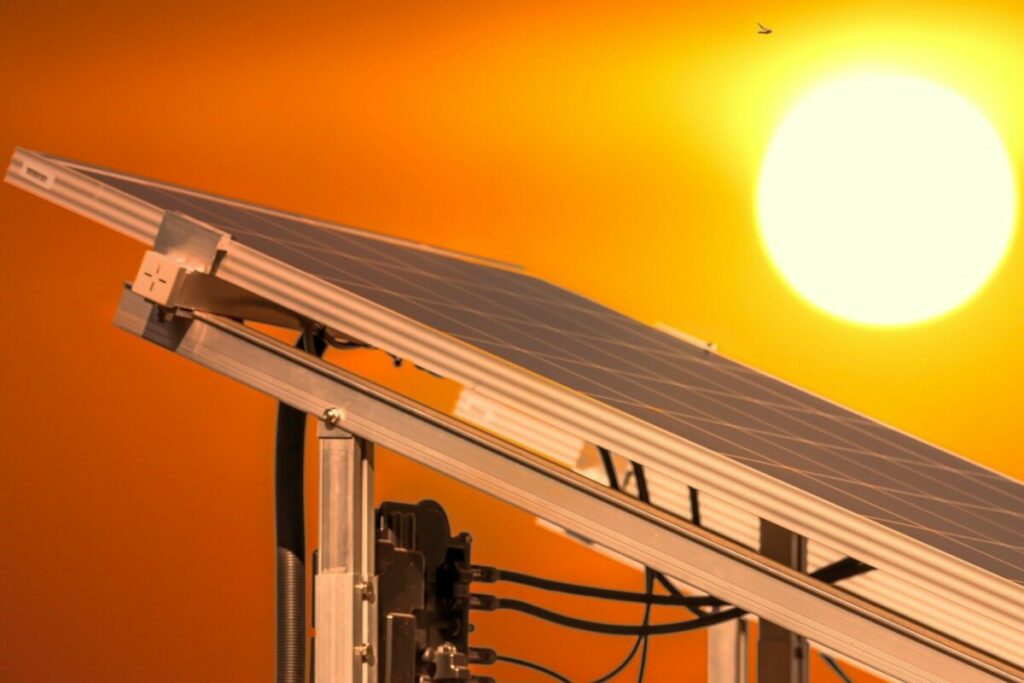
How does geothermal energy compare to other renewable sources like solar and wind power?
Geothermal energy stands out among renewable sources for its reliability and constant availability. Unlike solar and wind power, which are dependent on weather conditions and time of day. As a result geothermal energy can provide a continuous supply of power, making it an excellent base-load energy source. This means it can consistently meet energy demands. Without the need for storage solutions that solar and wind energy often require.
Moreover, geothermal power plants generally have a smaller land footprint compared to wind and solar farms when producing the same amount of energy. However, geothermal energy’s availability is geographically limited to areas with significant tectonic or volcanic activity, whereas solar and wind resources are more widely distributed.
In terms of efficiency, geothermal power plants can achieve high efficiency rates because they utilize heat directly from the Earth, which does not fluctuate like the availability of sunlight or wind. However, the initial investment for geothermal energy can be higher due to the costs associated with drilling and exploration.
Can geothermal energy be used in residential areas?
Yes, geothermal energy can be utilized in residential areas, primarily through geothermal heat pumps (GHPs). These systems take advantage of the Earth’s stable underground temperature to provide heating, cooling, and hot water in homes. GHPs are highly efficient, can reduce energy bills by up to 50% compared to conventional systems, and have the added benefit of a small surface footprint. So they are suitable for a wide range of climates and can be installed in various residential settings, from single-family homes to large apartment complexes.
The direct use of geothermal energy for heating is also possible in residential areas near geothermal resources, through district heating systems that distribute hot water or steam from a central source to multiple buildings.
What are the environmental impacts of geothermal energy production?
Geothermal energy is considered one of the cleanest and most sustainable energy sources. However, like all energy production methods, it has some environmental impacts, though significantly lower than fossil fuels. These include:
Land Use: Geothermal plants have a relatively small land footprint, but the site selection can impact local ecosystems. Responsible site planning and management can mitigate these effects.
Water Use: Water is used in the operation of some geothermal power plants, which could affect local water resources. However, many newer plants use closed-loop systems that recycle water.
Emissions: Geothermal plants emit low levels of greenhouse gases compared to fossil fuel-based plants. Some geothermal facilities release trace amounts of gases like carbon dioxide, hydrogen sulfide, and methane. Advanced gas capture technologies can minimize these emissions.
Seismic Activity: There is a potential for induced seismicity (small earthquakes) associated with the injection of water in Enhanced Geothermal Systems (EGS). Monitoring and managing the pressure and volume of injected fluids can reduce this risk.
Overall, the environmental impacts of geothermal energy are considerably lower than those of traditional energy sources, and with proper management and technological advancements, they can be minimized further, making geothermal a key component of a sustainable energy future.
What is Geothermal Power Conclusion
Geothermal power represents not just an alternative, but a cornerstone of future renewable energy solutions. Its ability to provide clean, continuous, and sustainable energy underscores its significant role in the global energy landscape. As we continue to harness this powerful resource, the promise of a cleaner, more sustainable energy future becomes ever more attainable.
This initial section provides a broad overview of geothermal power, its renewable nature, applications, and global significance, setting the stage for a deeper exploration in the subsequent sections.
Geothermal Power’s Role in Sustainable Energy
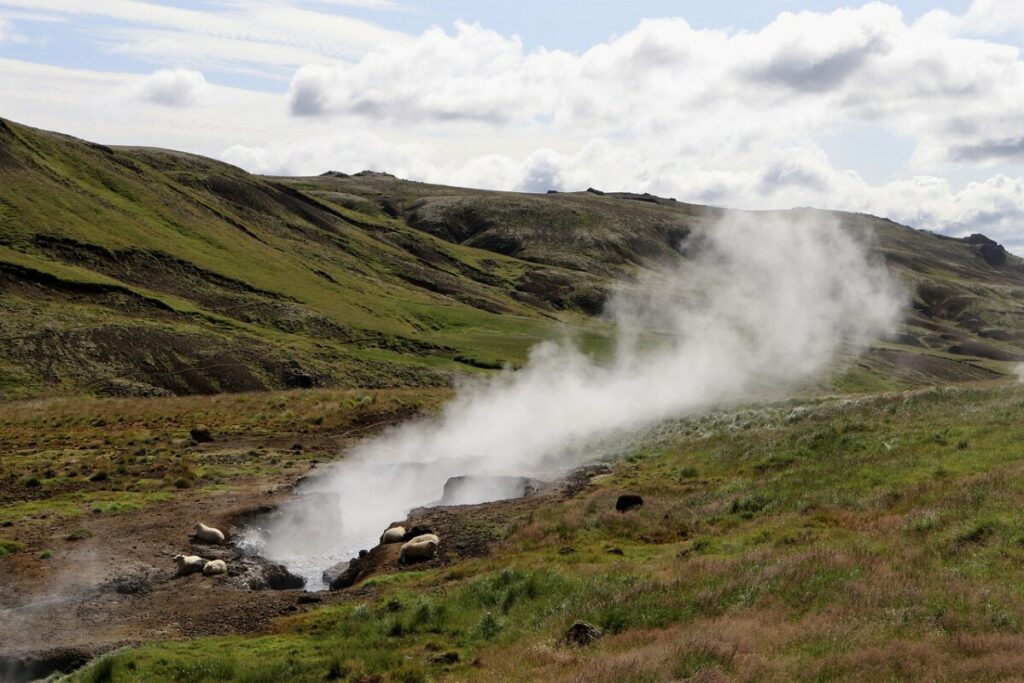
As we continue our exploration into geothermal power, it’s vital to emphasize the breadth and depth of this renewable resource’s potential. Understanding the intricate details of geothermal systems, their environmental benefits, and the challenges they face is crucial for recognizing their place in the renewable energy landscape.
Geothermal Systems: A Closer Look
Geothermal systems leverage the Earth’s underground reservoirs of hot water and steam, which are the result of natural geological processes, including volcanic activity and the Earth’s crust movements. These systems are categorized into three main types of geothermal power plants: dry-steam, flash steam, and binary cycle, each designed to optimize the extraction and conversion of geothermal energy into electricity.
- Dry-Steam Power Plants are the oldest form of geothermal electricity generation, directly using steam from underground to drive turbine generators.
- Flash Steam Power Plants are more common and use high-pressure hot water from the Earth, which is depressurized or “flashed” into steam to turn turbines.
- Binary Cycle Power Plants represent the most recent technological advance, where the geothermal fluid heats a secondary fluid with a lower boiling point in a heat exchanger, which then vaporizes and drives the turbines.
These diverse methods of tapping into geothermal energy illustrate the adaptability and efficiency of geothermal power in various geological settings.
Environmental Advantages and Sustainability
Geothermal power stands out among renewable resources for its low environmental impact and sustainability. It produces minimal greenhouse gas emissions compared to fossil fuels, significantly reducing the carbon footprint of electricity generation. According to the National Renewable Energy Laboratory, geothermal power plants emit 99% less carbon dioxide than conventional fossil fuel-based power plants.
Moreover, geothermal energy production requires relatively small land footprints, preserving natural landscapes and biodiversity. Its ability to provide base-load power, unlike the intermittent nature of solar and wind energy, makes it a pivotal component of a balanced and reliable energy mix.
Challenges and Future Directions
Despite its significant advantages, geothermal power faces certain challenges. High upfront costs for exploration and drilling can deter investment. Moreover, the geographical limitation is a notable challenge, as geothermal resources are most abundant in regions with high volcanic activity and tectonic plate boundaries. However, advancements in drilling technology and exploration methods are widening the potential reach of geothermal energy.
The future of geothermal power is bright, with ongoing research and development aimed at reducing costs and expanding its applicability. Enhanced Geothermal Systems (EGS), which create reservoirs in hot dry rock where there is little natural water, could significantly expand geothermal power’s reach and impact.
Expanding the Impact: Geothermal Energy Beyond Electricity
Beyond electricity generation, geothermal energy finds applications in direct-use projects and geothermal heat pumps. These applications provide heating, cooling, and hot water for residential, commercial, and industrial uses, showcasing the versatility and adaptability of geothermal technology to meet diverse energy needs.
- Direct-Use Applications involve using geothermal water directly for heating buildings, agricultural processes, and even fish farming, offering a cost-effective and sustainable alternative to traditional heating methods.
- Geothermal Heat Pumps for residential and commercial buildings can reduce energy consumption by up to 50% compared to conventional systems, demonstrating geothermal energy’s role in making buildings more energy-efficient.
What is Geothermal Power Frequently Asked Questions:
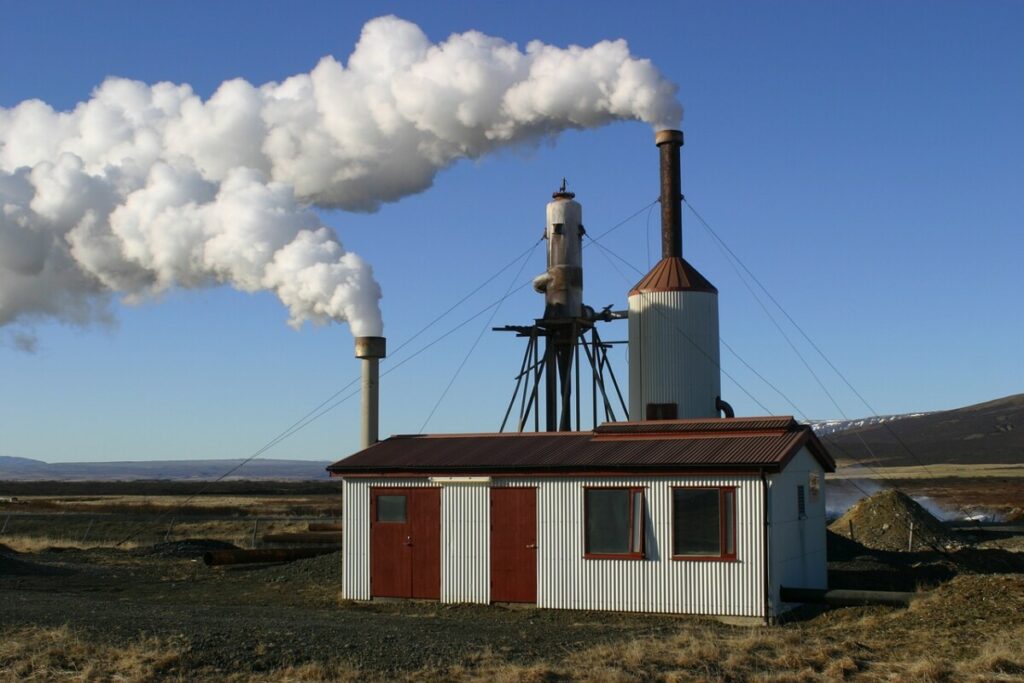
What innovations are on the horizon for geothermal technology?
Several innovations are shaping the future of geothermal technology, aiming to expand its applicability, efficiency, and environmental sustainability:
Enhanced Geothermal Systems (EGS): EGS represents a significant innovation by enabling geothermal energy extraction in areas without natural geothermal resources. By drilling deep into the Earth’s crust and injecting water to create steam, EGS can harness geothermal energy almost anywhere, potentially increasing the geothermal footprint exponentially.
Advanced Drilling Techniques: Innovations in drilling technology, such as laser drilling and plasma pulse technology, promise to reduce the cost and environmental impact of accessing deep geothermal resources. These advanced techniques can drill faster and through harder rock, making geothermal projects more feasible and less expensive.
Low-Temperature Geothermal Power: New technologies that can generate electricity from lower-temperature geothermal resources open up new areas for geothermal power production. These include binary cycle power plants that can operate efficiently at much lower temperatures than traditional geothermal systems.
Geothermal Heat Pumps (GHPs) for Cooling: While GHPs are already used for heating, innovations are making them more effective for cooling in warmer climates. This broadens their applicability and appeal, especially in residential and commercial buildings.
Co-Production with Oil and Gas Wells: Utilizing the hot water produced as a byproduct in oil and gas wells to generate geothermal energy is an innovative approach to leveraging existing infrastructure for renewable energy production, reducing waste, and increasing efficiency.
How does geothermal energy’s efficiency compare to other renewable resources?
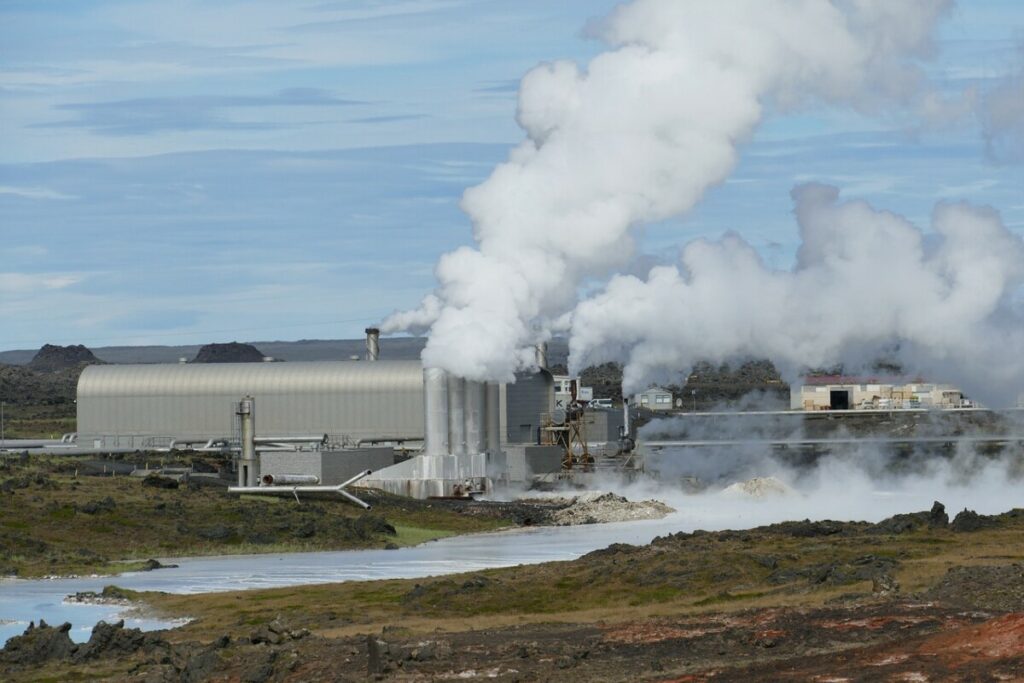
Geothermal energy is highly efficient when it comes to providing continuous, base-load power. Unlike solar and wind energy, which are subject to fluctuations in availability due to weather and time of day, geothermal energy can produce electricity or provide heating and cooling 24/7, making it one of the most reliable renewable energy sources.
In terms of thermal efficiency, geothermal power plants typically have higher conversion efficiencies than solar panels. Geothermal plants converting steam or hot water to electricity can achieve efficiencies of around 10% to 20%, which may seem lower than some renewable resources but is compensated by their ability to operate continuously, resulting in a higher overall output relative to their size.
Moreover, geothermal heat pumps, used for heating and cooling, can achieve efficiencies of 300% to 600%, meaning they deliver three to six times the energy they consume, making them one of the most energy-efficient heating and cooling technologies available.
What policies could support the expansion of geothermal energy?
Policies that could significantly support the expansion of geothermal energy include:
Financial Incentives: Subsidies, tax credits, and grants for geothermal exploration, development, and installation can reduce the financial barriers to entry for new projects.
Streamlined Permitting Processes: Simplifying and accelerating the permitting process for geothermal exploration and plant construction can reduce project lead times and costs.
Research and Development Funding: Investing in R&D for advanced geothermal technologies, such as EGS and low-temperature power generation, can spur innovation and reduce costs.
Renewable Portfolio Standards (RPS): Policies that require a certain percentage of electricity to come from renewable sources can drive demand for geothermal energy.
Net Metering Policies for Geothermal Heat Pumps: Allowing homeowners and businesses to sell excess energy generated by geothermal systems back to the grid can make geothermal heat pumps more attractive.
Public Awareness and Education Programs: Promoting awareness of geothermal energy’s benefits among policymakers, businesses, and the general public can increase support for geothermal projects.
Implementing these policies can create a favorable environment for geothermal energy, contributing to a diversified and sustainable energy portfolio.
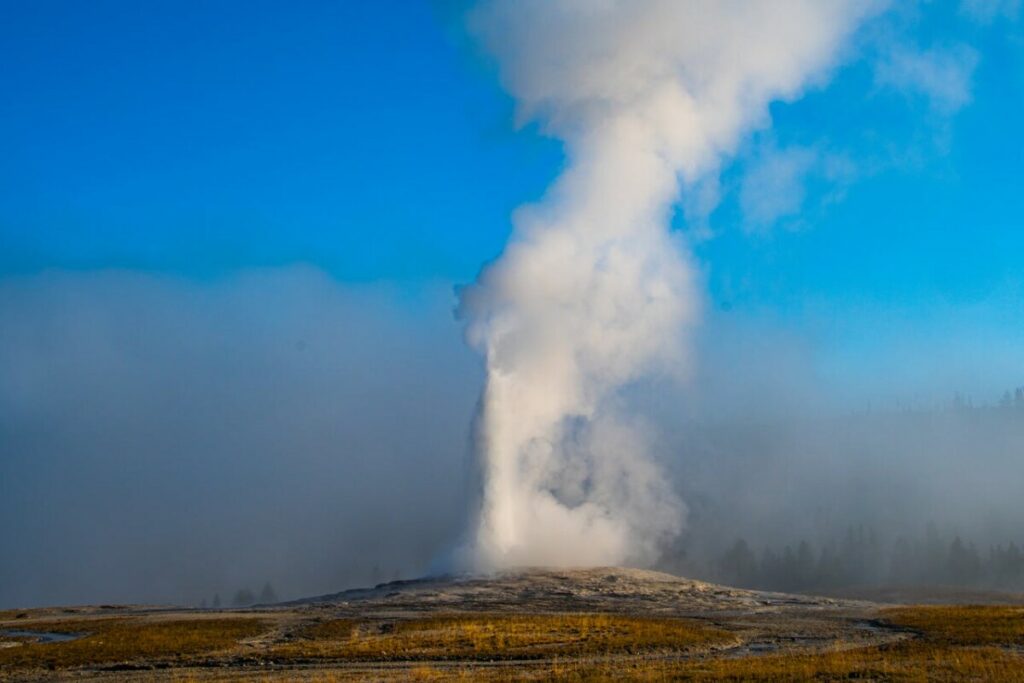
What is Geothermal Power Conclusion
The exploration of geothermal power reveals its undeniable value as a renewable, sustainable, and versatile energy source. As we look towards a future where renewable energy takes precedence, geothermal energy stands as a beacon of hope and innovation. Its role in the sustainable energy mix is complementary and essential, promising a cleaner, more resilient energy future for generations to come.
This section has expanded on the technical aspects, environmental benefits, and prospects of geothermal power, further reinforcing its importance in the global shift towards renewable energy.
Geothermal Energy: Bridging the Gap to a Renewable Future
As the global community seeks solutions for a sustainable future, geothermal energy emerges as a key player in bridging the gap between current energy practices and a renewable energy-dominated landscape. The integration of geothermal power into our energy systems not only highlights its versatility but also its potential to significantly impact the renewable energy sector positively.
Innovations Enhancing Geothermal’s Reach
The field of geothermal energy is ripe with innovation, aimed at overcoming its challenges and maximizing its potential. Enhanced Geothermal Systems (EGS) are at the forefront of this innovation, offering a glimpse into the future where geothermal energy could be harnessed anywhere on Earth. EGS involves creating artificial reservoirs in areas without natural water flow or heat, which could dramatically increase the availability of geothermal resources.
Moreover, advancements in drilling technologies, such as the development of more durable and efficient drilling materials, can potentially lower the costs associated with geothermal projects. The use of machine learning and AI in identifying promising geothermal sites is another area where technology could reduce the risk and expense of exploration.
The Environmental and Economic Benefits of Going Geothermal
Adopting geothermal energy on a larger scale presents significant environmental and economic benefits. By reducing reliance on fossil fuels, countries can decrease their carbon emissions, contributing to global efforts against climate change. The U.S. Department of Energy notes that geothermal power plants have the smallest land footprint per kilowatt-hour of any renewable energy technology.
Economically, geothermal energy can provide a stable energy price due to its immunity from the volatile prices of fossil fuel markets. Its ability to provide base-load power can also reduce the costs associated with integrating other, more intermittent renewable sources like solar and wind into the energy grid.
Global Geothermal Leadership and Potential
While the United States leads in geothermal energy production, countries like Iceland and New Zealand also showcase the potential of geothermal power. Iceland, with its abundant geothermal resources, meets nearly all of its heating and hot water needs through geothermal energy. Demonstrating a successful model of geothermal utilization.
Emerging geothermal leaders, such as Kenya and Indonesia, are exploring geothermal’s potential. To meet their energy needs and drive economic development. These examples highlight the global applicability of geothermal energy. And its role in meeting the diverse energy needs of countries around the world.
Challenges to Overcome
Despite its potential, geothermal energy’s growth faces challenges. The initial exploration and development costs remain high, and the risk of not finding sufficient resources can deter investment. Furthermore, geothermal projects can have long development timelines. Which may not align with the immediate energy needs or financial planning of some communities or countries.
Policy support, in the form of subsidies, tax incentives, and research funding, is crucial to overcoming these hurdles. By providing a supportive framework for geothermal energy development, governments can encourage investment and innovation in this clean, renewable resource.
What is Geothermal Power Frequently Asked Questions:
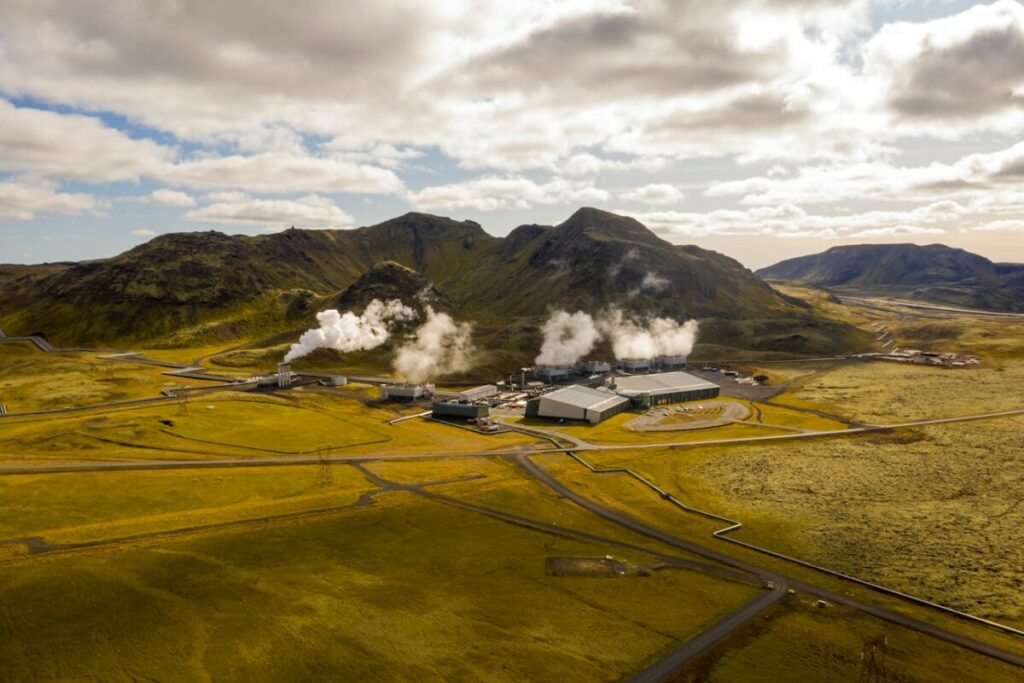
What role can individuals play in supporting geothermal energy?
Individuals can support geothermal energy in several impactful ways:
- Advocacy and Education: By becoming informed advocates for geothermal energy, individuals can educate their communities about its benefits and sustainability. Advocacy can also extend to supporting policies and legislation that favor renewable energy development, including geothermal.
- Investing in Geothermal Systems: Homeowners and businesses can invest in geothermal heat pumps (GHPs) for their heating and cooling needs. Although the initial investment is higher, the long-term savings on energy costs and the environmental benefits make it a sustainable choice.
- Supporting Green Energy Providers: Individuals can choose to purchase electricity from suppliers that include geothermal energy in their renewable energy mix. This demand encourages utilities to invest in or purchase more renewable energy, including geothermal.
- Community Projects: Participating in or initiating community projects that aim to harness geothermal energy for local development can foster broader acceptance and understanding of geothermal power.
How can geothermal energy complement other renewable energy sources?
Geothermal energy can play a crucial role in a diversified renewable energy portfolio, complementing other sources in several ways:
- Stable Base-Load Power: Geothermal energy can provide continuous base-load power, complementing the intermittent nature of solar and wind energy. This stability ensures a constant energy supply, reducing the need for storage solutions and making the energy grid more reliable.
- Heating and Cooling Solutions: Geothermal heat pumps offer efficient heating and cooling solutions that can reduce the overall energy consumption of buildings. Complementing efforts to increase energy efficiency alongside other renewable technologies.
- Integrated Energy Systems: Geothermal can be part of integrated renewable energy systems. Where excess heat from solar or wind power generation could potentially be stored in geothermal reservoirs for later use. Enhancing overall system efficiency.
- Reducing Dependency on Fossil Fuels: By providing a reliable renewable option, geothermal energy helps reduce the dependency on fossil fuels. Furthering the transition to a sustainable energy mix alongside solar, wind, hydro, and biomass energy sources.
What are the latest developments in geothermal technology?
Recent advancements in geothermal technology are expanding its potential and making it more accessible and efficient:
- Enhanced Geothermal Systems (EGS): EGS technology, which allows for the creation of geothermal reservoirs in areas without natural hydrothermal resources, is advancing. Making geothermal energy accessible in more locations.
- Advanced Drilling Technologies: Developments in drilling technologies, such as using lasers and plasma, are reducing the costs and environmental impact of drilling. Making it feasible to reach deeper geothermal resources.
- Low-Temperature Technologies: Innovations in low-temperature geothermal technologies are enabling the use of geothermal resources at temperatures. Previously considered too low for commercial energy production, broadening the potential sites for geothermal development.
- Co-Production with Oil and Gas: The co-production of geothermal energy from oil and gas wells, utilizing the hot water produced as a byproduct, is being explored as a way to make use of existing infrastructure and reduce waste.
- Hybrid Systems: The development of hybrid geothermal systems, which combine geothermal energy with other renewables. Like solar or biomass to increase efficiency and output, represents an exciting area of innovation.
These developments are making geothermal energy more versatile, efficient, and compatible with various environments, signaling a promising future for this sustainable energy source.
What is Geothermal Power Conclusion
The journey towards a renewable energy future is complex. And requires the integration of various sources, with geothermal energy playing a pivotal role. Its reliability, sustainability, and capacity for innovation position geothermal power as an essential component of our renewable energy arsenal. As technology advances and policy support grows, geothermal energy’s potential to shape a sustainable, clean energy future is unparalleled.
The exploration of geothermal energy not only highlights its capabilities and benefits. But also emphasizes the collective effort needed to harness this powerful resource fully. The future of geothermal power is not just about technology and resources; it’s about vision, collaboration, and a commitment to a cleaner, more sustainable world.
This section further emphasizes the innovative potential of geothermal energy. Its environmental and economic benefits, global leadership in geothermal usage. And the challenges that need addressing to fully leverage this renewable resource.
Advancing Toward a Geothermal-Powered World: Strategies and Solutions

The transition to a world where geothermal energy plays a significant role in our energy mix is not just a possibility but an imperative for achieving sustainability goals. This part of the article focuses on strategies and solutions. That could accelerate the adoption of geothermal power, ensuring that this renewable resource achieves its full potential in the global energy landscape.
Strategic Investment and Research
The path to a geothermal-powered future begins with strategic investment and research. Governments and private entities must prioritize funding for geothermal exploration and technology development. By investing in research, particularly in Enhanced Geothermal Systems (EGS) and advanced drilling techniques, the geothermal industry can overcome technical barriers, reduce costs, and expand its reach beyond traditional geothermal hotspots.
Policy Frameworks and Incentives
Effective policy frameworks are critical for fostering the growth of geothermal energy. Policies that encourage renewable energy adoption, such as feed-in tariffs, tax incentives, and grants for geothermal projects, can make a substantial difference. Additionally, streamlining the permitting process for geothermal exploration and plant construction can accelerate project timelines and reduce costs.
Education and Awareness
Raising awareness about the benefits and possibilities of geothermal energy is essential for garnering public and political support. Educational campaigns can demystify geothermal energy for the general public. Highlighting its role in reducing carbon emissions and providing a stable, reliable energy source. Furthermore, educating policymakers on the economic and environmental advantages of geothermal power can lead to more supportive legislation.
International Collaboration
Geothermal energy’s potential can be maximized through international collaboration. Sharing knowledge, research findings, and best practices across borders can speed up technological advancements and reduce costs. International partnerships and funding mechanisms can also support geothermal projects in developing countries. Where the energy need is greatest but financial resources are often limited.
Integration with Other Renewables
Maximizing the benefits of geothermal energy requires its integration with other renewable sources. Geothermal can provide the reliable base-load power necessary to complement the intermittent nature of solar and wind energy. By designing energy systems that leverage the strengths of each renewable source, we can create a more resilient and sustainable energy grid.
Sustainable Development and Geothermal Expansion
Expanding geothermal energy must be done sustainably, ensuring that projects do not adversely affect local communities or ecosystems. Best practices in environmental assessment and community engagement can help identify and mitigate potential impacts. Geothermal projects can also contribute to local economies, providing jobs and supporting infrastructure development.
What is Geothermal Power Frequently Asked Questions:
How does geothermal energy impact water resources?
Geothermal energy’s impact on water resources varies depending on the technology used. For geothermal power plants, water is often used in the cooling process or as a medium to transport heat. However, many modern geothermal systems operate on closed loops, where water is recycled and reused. Minimizing water consumption and reducing the impact on local water resources.
In Enhanced Geothermal Systems (EGS) and certain open-loop geothermal operations, there is a potential for groundwater contamination. Through the introduction of chemicals used in drilling or from naturally occurring minerals and gases brought to the surface. However, strict regulations and advanced engineering practices are in place to mitigate these risks. Ensuring that geothermal energy remains a relatively low-impact renewable resource in terms of water use.

What are the implications of geothermal energy for wildlife and natural habitats?
The implications of geothermal energy development on wildlife and natural habitats are generally considered to be minimal. Especially when compared to the impacts of fossil fuels and some other renewable energy sources. Geothermal power plants typically have a small footprint. Requiring less land per MW of electricity generated than many other energy sources. This smaller footprint reduces habitat loss and fragmentation.
However, like any development project, geothermal plants can have localized effects on wildlife and habitats, particularly during the construction phase. Potential impacts include alterations to land surface and access to water resources, which could affect local flora and fauna. Environmental impact assessments are crucial for identifying and mitigating these impacts, ensuring that geothermal energy is developed responsibly and sustainably.
Can geothermal energy supply the world’s energy needs?
Geothermal energy has the potential to contribute significantly to the global energy mix. But it is unlikely to be the sole solution for meeting the world’s energy needs. Its availability is geographically limited to regions with accessible geothermal resources, such as volcanic areas, tectonic plate boundaries, and hotspots. These limitations mean that while geothermal energy can supply a considerable portion of energy needs in certain regions. It would need to be part of a diverse portfolio of renewable energy sources to meet global demands.
Nevertheless, advances in technology, such as Enhanced Geothermal Systems (EGS), could expand the potential of geothermal energy to regions previously considered unsuitable. If these technologies become commercially viable on a large scale, geothermal energy could play a more significant role in the global energy supply. Coupled with other renewables, energy efficiency measures, and smart grid technologies, geothermal energy could help transition the world towards a more sustainable and clean energy future.
What is Geothermal Power Conclusion
As we advance toward a more sustainable and renewable energy future, geothermal power stands out for its vast potential. Environmental benefits, and capacity for innovation. The strategies outlined above—focusing on investment, policy support, education, international collaboration, and integration with other renewables—are essential steps for unlocking geothermal energy’s full potential.
Embracing geothermal energy represents a commitment to a cleaner, more sustainable future. It’s a journey that requires collective effort, innovation, and a strategic approach. But the rewards—a stable, reliable, and clean energy source—are immense and within reach. The future of energy is not just renewable; it’s geothermal.
This section delves into actionable strategies for enhancing the adoption and impact of geothermal energy worldwide. It emphasizes the need for investment, supportive policies, education, international collaboration. And integration with other renewable resources, concluding with a call to action for a collective move toward a sustainable, geothermal-powered future.
Embracing the Geothermal Revolution: Pathways to a Greener Tomorrow
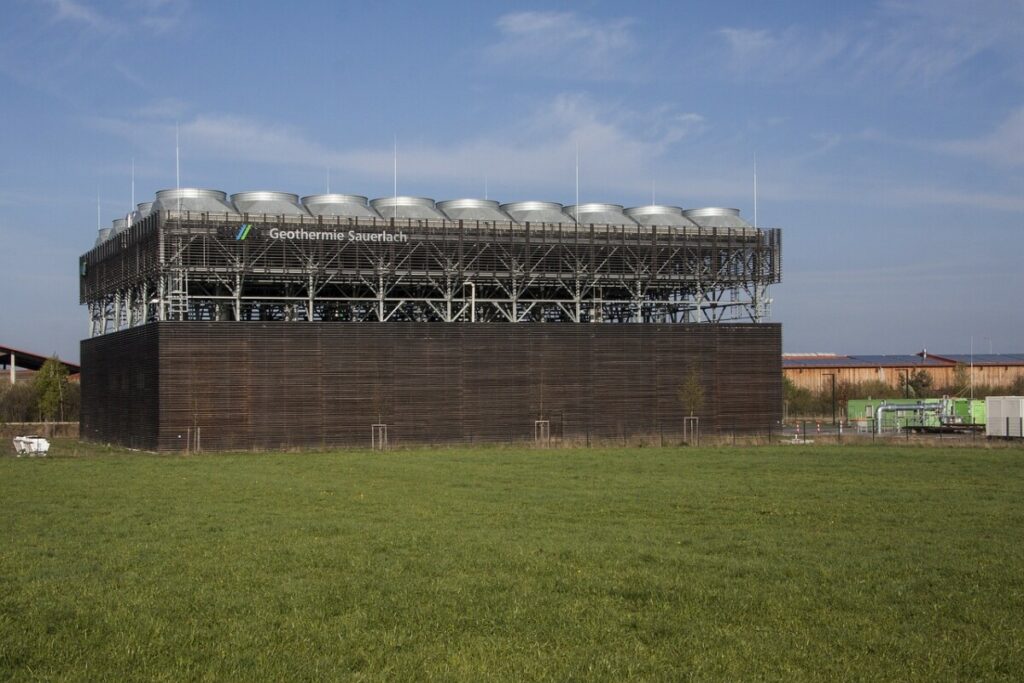
The dawn of the geothermal revolution is upon us, presenting an unparalleled opportunity to redefine our energy future. As we stand on the precipice of this transformation, it’s essential to chart the pathways that can lead us toward a more sustainable, cleaner, and geothermal-powered tomorrow. This concluding section of our exploration into geothermal energy outlines the essential steps and the collective vision required to embrace the geothermal revolution fully.
Accelerating Technological Innovation
The acceleration of technological innovation in geothermal energy is crucial. Continuous advancements in drilling technology, heat extraction methods, and plant efficiency can significantly reduce the cost. And increase the feasibility of geothermal projects. Investing in research and development, especially in Enhanced Geothermal Systems (EGS) and low-temperature applications, can unlock geothermal potential in regions previously considered unsuitable.
Building a Skilled Workforce
A skilled workforce is fundamental to the geothermal revolution. Education and training programs tailored to the geothermal industry can equip individuals with the necessary skills for this growing sector. Partnerships between educational institutions, industry, and governments can foster a talent pool. Ready to tackle the challenges and opportunities of geothermal energy development.
Fostering Community Engagement and Support
Community engagement and support are pivotal for the successful expansion of geothermal energy. Transparent communication about the benefits and impacts of geothermal projects can foster positive relationships with local communities. Involving communities in the planning and benefits of geothermal development, such as through direct employment or energy discounts, can ensure projects are welcomed and supported.
Ensuring Environmental Stewardship
Environmental stewardship must be at the heart of the geothermal revolution. Comprehensive environmental impact assessments and sustainable development practices should guide all geothermal projects. Protecting biodiversity, conserving water resources, and minimizing landscape impacts are vital. To ensuring that geothermal energy remains a truly green and sustainable resource.
Leveraging Policy and Regulatory Support
Policy and regulatory support are essential to scale up geothermal energy. Governments can play a transformative role by implementing policies that encourage geothermal development. Such as streamlined permitting processes, financial incentives, and support for research and innovation. International frameworks that facilitate knowledge sharing and financial support for geothermal projects can also contribute to global geothermal growth.
Emphasizing Geothermal’s Role in the Energy Transition
Highlighting geothermal energy’s role in the global energy transition is critical for gaining broader acceptance and investment. As a clean, reliable, and versatile source of power, geothermal energy is a key component of a diversified energy portfolio. One that can reduce greenhouse gas emissions and enhance energy security. Public awareness campaigns and educational initiatives can highlight geothermal’s benefits, increasing support for its development.
Looking Forward: The Future Powered by Geothermal Energy
The journey towards a geothermal-powered future is both exciting and necessary. It offers a vision of an energy system that leverages the earth’s heat. To power our world in a sustainable, efficient, and environmentally friendly manner. By embracing the geothermal revolution, we can achieve significant strides in combating climate change. Enhancing energy security, and promoting sustainable development.
The pathways outlined here—technological innovation, workforce development, community engagement, environmental stewardship, policy support, and public awareness—are critical steps toward realizing the full potential of geothermal energy. As we move forward, the collective efforts of governments, industry, communities, and individuals will be paramount in harnessing the power beneath our feet.
The future of geothermal energy is not just about generating power; it’s about reshaping our relationship with the planet, fostering a sustainable coexistence, and empowering generations to come. The geothermal revolution beckons—a call to action for all of us to contribute to a cleaner, greener, and more resilient world. Please share What is Geothermal Power so that others may find it. Thank you.
Recent Posts
Understanding Energy and Electricity: The Power For Progress
Energy and Electricity Energy and electricity are integral components of modern life, powering everything from homes and businesses to transportation and communication. Without them, the...
The Future of Wind Energy The future of wind energy is set to play a critical role in addressing global energy needs while combating climate change. As renewable energy sources like wind and...


